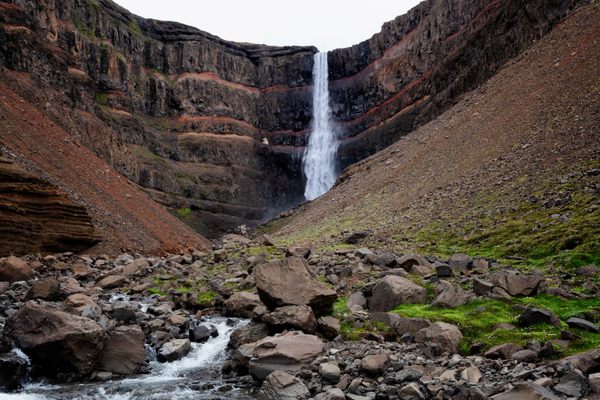Merzbacher Lake
Glacial lake that mysteriously empties itself every year.
A strenuous multi-day trek is necessary to reach Merzbacher Lake, a lake so far away from anything, that even the label “remote” would be an understatement. The lake is located at the confluence of the Inylchek Glacier in one of the most inaccessible regions of the Tian Shan Mountains of Kyrgyzstan. Even in a country like Kyrgyzstan, so blessed with stunning natural scenery, Merzbacher Lake is truly outstanding.
Every spring, when the frozen lake melts, the lake’s waters lap at the tongue of the glacier and successively breaks off chunks of ice. The lake filled with drifting icebergs is a spectacular sight, but that is not all there is to Merzbacher Lake.
The lake constitutes a phenomenon known as a proglacial lake, a lake dammed by a glacier. Proglacial lakes are found in various locations all over the world, but usually they enlarge until the glacier retreats, or are short-lived in their existence. Merzbacher Lake however, is highly exceptional since the lake repeatedly gets emptied, just to get refilled soon after.
The process, still not fully understood by geologists, can be described like this: the melt water fills up the lake in the summer months at a rate of up to two meters per day. When the lake is filled, it bursts out and completely empties itself within just three days. The release of the water occurrs when the dam of ice buoys upwards and opens up a number of glacial channels in the damming glacier. The water then discharges through the glacier into the valley on the other side of the ice, where it flows into the Inylchek River. When the lake has emptied, the ice dam lowers, thereby blocking the glacial channels. As a result, the lake begins to fill up again.
The cycle of the emptying and subsequent refilling of the lake occurrs at least once per year, in some years even twice. Nevertheless, it is very difficult to estimate the timing when the emptying begins. It usually takes place in August, but in some years it has occurred as early as Mid-July. Because of the difficult estimate to reach the lake at the right time, so far only very few people have witnessed the phenomenon.
Community Contributors
Added by
Edited by
The Atlas Obscura Podcast is Back!



















Follow us on Twitter to get the latest on the world's hidden wonders.
Like us on Facebook to get the latest on the world's hidden wonders.
Follow us on Twitter Like us on Facebook